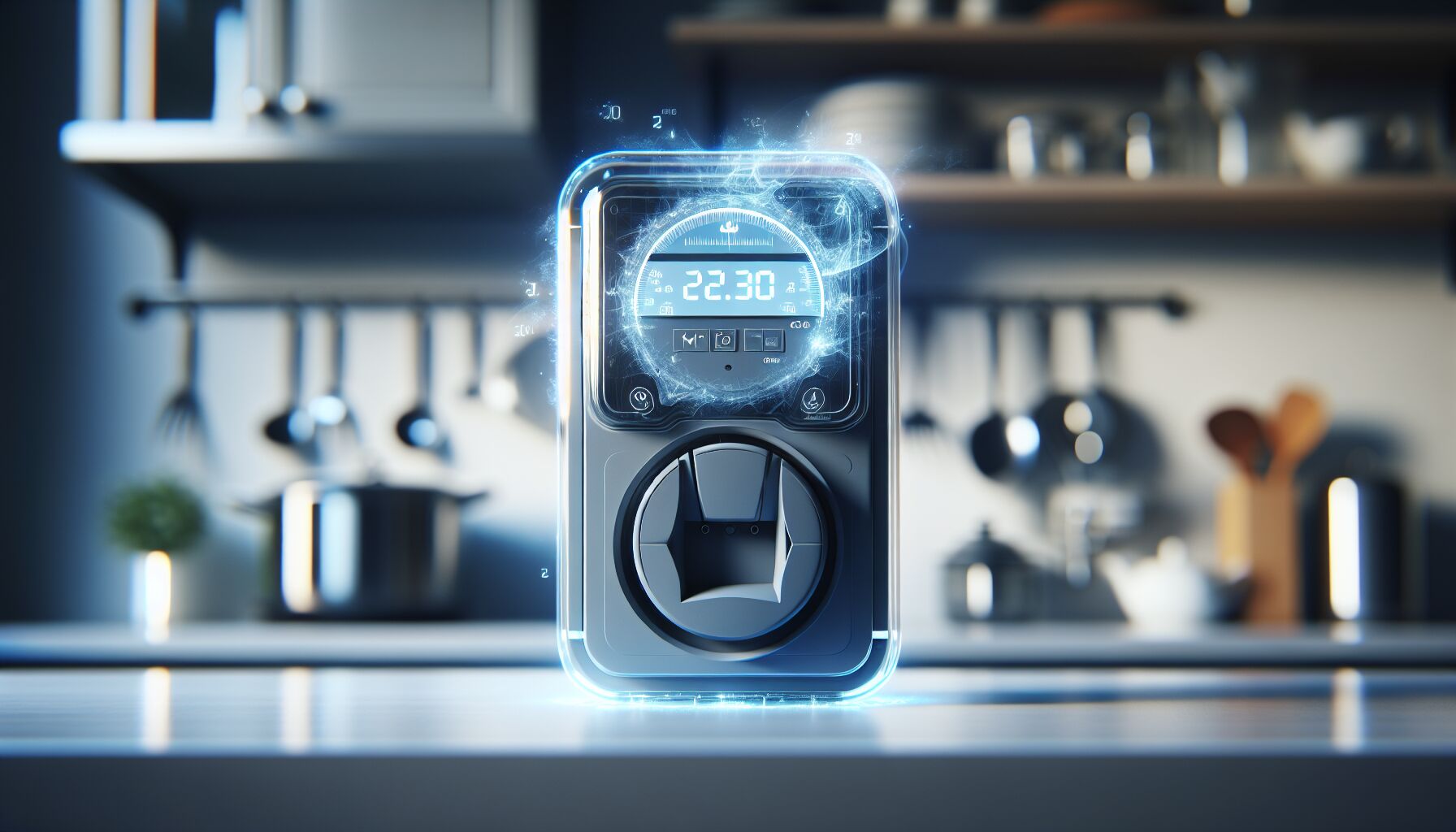 Smart meters are often talked about like they’re magic wands for energy efficiency—just install one, and suddenly your electricity consumption shrinks. But let’s not get ahead of ourselves. These devices are less about directly saving power and more about showing you where it’s going, often in ways traditional meters never could.
Smart meters are often talked about like they’re magic wands for energy efficiency—just install one, and suddenly your electricity consumption shrinks. But let’s not get ahead of ourselves. These devices are less about directly saving power and more about showing you where it’s going, often in ways traditional meters never could.
Here’s the deal: traditional meters are passive. They just tick along, keeping a tally of your electricity use, which your utility company checks maybe once a month. A smart meter, on the other hand, is constantly in communication with your utility provider, updating usage in real-time or near real-time. This is where things start to change.
Picture this: You’re running your dishwasher at 3 PM, your AC is cranking, and your dryer’s spinning away. Normally, you’d only realize how much power you burned through when the bill arrives weeks later. But with a smart meter, you can track your energy use as it happens. And if you have access to an app or an in-home display, you might say, “Wait a minute—my power usage just spiked!” and decide to delay laundry until nighttime when rates are cheaper. This is the essence of energy surveillance—not in a Big Brother way, but in the sense of watching your own consumption much more closely than before.
Now, let’s talk impact. Can simply knowing when you’re using power encourage you to use less? For many people, yes. Studies have shown that when households get real-time feedback, they tend to adjust their habits—maybe turning off lights more diligently or spacing out appliance usage. The catch? This effect varies wildly from person to person. Some people check their home monitoring tools religiously; others look once, then forget it even exists.
Then there’s the matter of peak hours. Many utility companies offer time-of-use pricing, charging more when demand is high (think: late afternoon in the summer when air conditioners are blasting). Smart meters help households shift electricity use to off-peak hours by providing clearer insight into when those expensive periods hit. In theory, this should help distribute demand more evenly across the grid, reducing strain on power plants and lowering overall energy waste. Is it a perfect system? Not quite. Some homes—especially those with kids or work-from-home setups—can’t just move their energy use around whenever they please.
And here’s something unexpected: smart meters may reveal hidden energy hogs in your home. Ever noticed how some devices pull power even when they’re off? That fancy gaming console in “sleep mode,” your DVR quietly recording, or even an old refrigerator that’s working harder than it should. When homeowners see this consistent background drain through home monitoring, they sometimes take action—maybe unplugging things or upgrading old appliances.
So, yes, smart meters can influence energy consumption—but mostly by making people more aware. They don’t cut energy use for you; they just give you the tools to make better decisions. Whether you actually use those tools? That’s another story. And that brings us to the big question: Are smart meters all that they’re cracked up to be, or do they also come with drawbacks? Let’s look at both sides of the coin.
Potential benefits and drawbacks of smart meters
There’s no denying that smart meters bring a few serious perks—at least on paper. The biggest selling point? More control over your energy use. With real-time or near real-time updates, you’re no longer flying blind between billing cycles. You can actually see when power-hungry appliances kick in and adjust accordingly.
But here’s where things get interesting. While that level of energy surveillance can help you make smarter choices, it also assumes you’ll stay engaged enough to act on the information. And let’s be honest—most people don’t exactly have “check home monitoring data” at the top of their daily to-do list. Some folks love tracking trends and tweaking habits, but others lose interest once the novelty wears off.
Then there’s the financial side. Many utility companies pair smart meters with time-of-use pricing, promising lower rates during off-peak hours. On paper, it’s a win-win: you shift your heavy electricity use to cheaper times, and the grid avoids overloads. But in reality, not everyone has the flexibility to wait until 10 PM to do laundry or cook dinner. If you’re a parent wrangling kids in the early evening or someone working from home running essential devices all day, you might actually end up paying more instead of saving.
And let’s talk about those unexpected downsides. Some homeowners have reported surprise jumps in their bills after smart meters were installed, sparking debates over accuracy. Could it be that legacy meters were underreporting usage all along? Possibly. But when people suddenly see higher numbers tied to their consumption, frustration follows. No one likes feeling like they’re being charged more just because of a shiny new device.
Another common criticism? The privacy question. Since smart meters constantly send data to utility companies, concerns over how that information is used (or potentially misused) aren’t exactly far-fetched. Does your power company know when you’re home based on energy patterns? Could that data be shared or analyzed in ways customers aren’t fully aware of? While most utilities insist strict protocols are in place, the idea of in-depth home monitoring makes some people uneasy.
Technical hiccups also exist. Just like any connected device, smart meters can malfunction—or worse, get hacked. While rare, incidents have been reported where meters failed to update correctly or presented inaccurate data. Power companies are quick to troubleshoot, but if your bill suddenly spikes because of a glitch, it’s not a headache you’d want to deal with.
So, are smart meters a net positive? That depends on how you use them and how much you trust the system behind them. For those who actively monitor usage and respond to price signals, the benefits are clear. For others, they might end up being just another piece of tech that fades into the background, quietly collecting data without really changing much.
That brings us to the big question: Are these devices truly making energy use more efficient—or just shifting the way we think about consumption? Let’s break that down next.
Are smart meters truly making energy use more efficient?
 There’s a lot of talk about how smart meters can make energy use more efficient, but what does that really mean? Reducing overall consumption? Smoothing out demand to prevent grid overload? Saving you money? In a perfect world, they’d do all three, but reality is, well—messier.
There’s a lot of talk about how smart meters can make energy use more efficient, but what does that really mean? Reducing overall consumption? Smoothing out demand to prevent grid overload? Saving you money? In a perfect world, they’d do all three, but reality is, well—messier.
First, let’s be clear: smart meters don’t directly lower energy use. They don’t whisper to your air conditioner to work less or shut off lights when you forget. What they do is give homeowners and utilities better visibility into consumption. And that opens the door to behavior-based savings.
Take home monitoring tools, for example. Some utilities offer smartphone apps that break down usage by the hour, showing how much power is consumed throughout the day. If you’re the type who loves data (or just wants to keep the bill in check), this kind of insight can be a game-changer. Let’s say you notice a huge spike every afternoon. If that coincides with when your kids get home and power up every screen in sight, you might encourage them to take it easy—or set limits on high-energy devices. The same goes for households unknowingly running inefficient appliances. A decades-old fridge could be bleeding electricity, and smart meters help pinpoint that drain.
But does this actually lead to meaningful energy reduction across the board? Studies suggest results are mixed. Some homeowners make significant changes when given real-time energy data—others? Not so much. It turns out that nudging people to adjust habits isn’t always enough. Convenience often wins. If your schedule demands running the dishwasher at 6 PM, it’s unlikely you’ll wait until midnight just to save a few cents.
Then there’s the role of utilities. Many power companies use smart meters to better manage demand, encouraging customers to shift electricity use to off-peak hours. This, in theory, reduces strain on the grid and helps curb power plant emissions. But here’s the kicker: while this might make energy consumption appear more efficient from a system-wide perspective, it doesn’t necessarily mean less energy is being used—it’s just being used at different times. That’s more about distribution than true efficiency.
And let’s talk about automation—because that’s where the real efficiency gains tend to happen. Paired with smart thermostats, connected appliances, or energy-aware power strips, smart meters can contribute to a smarter, more self-regulating home. Imagine your AC automatically dialing back when electricity prices rise or a connected water heater only running when demand (and cost) is low. Optimizations like these go beyond mere awareness; they actively reduce waste … but they also require investement in additional tech. And not everyone is keen on upgrading perfectly functional appliances just to shave a few dollars off their bill.
So, are smart meters truly making energy use more efficient? The short answer: it depends. If homeowners and businesses use the data to adjust habits and invest in smarter systems, then yes—meaningful reductions are possible. But for those who either don’t engage with their home monitoring tools or can’t easily change their energy habits, the efficiency gains might be more theoretical than tangible.
One thing’s for sure: smart meters are changing the way we think about energy. But as for whether they actually curb overall consumption? That’s still up for debate.
 DS Haven In Light Of Things
DS Haven In Light Of Things

